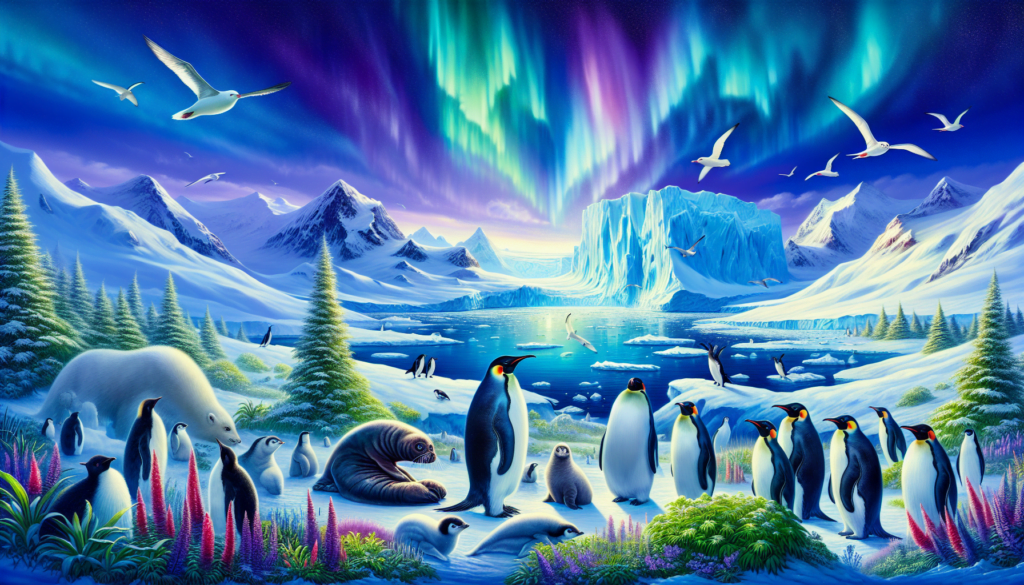Contents
Antarctica, the planet’s southernmost continent, presents a paradoxical landscape. With its icy expanse, it is often perceived as a barren wasteland, but it’s far from lifeless. This remote, frozen desert hosts a fascinating and delicate ecosystem that defies the extremities of its environment. Let us delve into the wonders of Antarctic wildlife and uncover the enigmatic beauty of this region.
The Harsh Environment
Antarctica’s climate is characterized by extreme cold, fierce winds, and dry conditions. Temperatures can plunge to below -80 degrees Celsius (-112 degrees Fahrenheit) in the winter. The continent receives very little precipitation, classifying it as a desert. The landscape is dominated by massive ice sheets, glaciers, and floating ice shelves. Despite these harsh conditions, life thrives here in extraordinary ways.
Marine Richness: Life Beneath the Ice
The ocean surrounding Antarctica, known as the Southern Ocean, is teeming with life. This marine ecosystem supports a diverse array of species, many of which are uniquely adapted to the cold.
Phytoplankton: The Foundation
The food web in Antarctica’s aquatic environment begins with phytoplankton, microscopic plants that conduct photosynthesis. These organisms are the primary producers, forming the base of the food chain and supporting a plethora of marine life.
Krill: The Keystone Species
One of the most critical organisms in the Southern Ocean is Antarctic krill (Euphausia superba). These shrimp-like creatures form dense swarms and are a crucial food source for many larger animals, including whales, seals, and penguins. Their role in the ecosystem cannot be overstated.
Majestic Marine Mammals
Several species of whales, such as the blue whale, humpback whale, and the minke whale, populate these icy waters. These leviathans navigate the Southern Ocean in search of krill and small fish, showcasing impressive feeding strategies like bubble-net hunting.
Seals: The Versatile Divers
Seals are among Antarctica’s most prominent marine mammals. Species such as the Weddell seal, leopard seal, and crabeater seal are proficient divers, capable of descending to great depths to capture their prey. Their adept swimming skills and insulating blubber enable them to survive and thrive in frigid waters.
The Aviary Abode: Birds of Antarctica
Penguins: Iconic Inhabitants
Penguins are perhaps the most celebrated residents of Antarctica. Species like the Emperor penguin and the Adélie penguin have evolved remarkable adaptations to endure the continent’s extreme conditions. These flightless birds are adept swimmers, using their flippers to navigate the icy waters in search of fish, squid, and krill. Their breeding colonies are astonishing spectacles of nature’s ingenuity, where they huddle together for warmth and take turns in parental duties.
Albatrosses and Petrels
Beyond penguins, Antarctica’s skies and sea cliffs are home to various seabirds, including albatrosses and petrels. These birds have incredible wingspans and are known for their long migrations across the Southern Ocean. They play an essential role in the marine ecosystem by scavenging and helping control fish and squid populations.
Terrestrial Toughness: Life on Solid Ground
Despite the ice-covered terrain, some hardy species manage to eke out an existence on Antarctica’s landmass.
Invertebrates: The Ice Crawlers
The continent’s terrestrial life is mostly composed of invertebrates. Tiny mites, springtails, and nematodes are among the few organisms that can survive on land. These creatures often inhabit the moist microenvironments created by melting ice and snow.
Mosses and Lichens: Pioneers of the Land
Vegetation in Antarctica is sparse but vital. Mosses and lichens are the primary forms of plant life, and they endure extreme conditions by entering dormant states during long, cold periods. These plants provide shelter and sustenance for the microscopic invertebrates that call Antarctica home.
Conservation Challenges and Efforts
Climate Change: A Looming Threat
Antarctica’s delicate ecosystem is exceptionally vulnerable to climate change. Rising global temperatures are causing ice shelves to disintegrate, sea ice to recede, and ocean temperatures to increase. These changes have far-reaching implications for the wildlife that depends on the stable environment of the Southern Ocean.
Protecting a Pristine Wilderness
Efforts to conserve Antarctica’s unique ecosystem are ongoing. The Antarctic Treaty System and various Marine Protected Areas (MPAs) have been established to regulate human activities, protect habitats, and ensure that scientific research does not harm the environment. International cooperation remains crucial to safeguarding the continent’s biodiversity.
Conclusion
Antarctica, a land of ice and extremes, showcases a unique and captivating ecosystem. From the deep-diving seals and colossal whales to the resilient penguins and minute invertebrates, life finds a way to flourish in this seemingly inhospitable environment. Understanding and preserving the wonders of Antarctic wildlife is essential, as their existence is a testament to nature’s resilience and adaptability in the face of relentless adversity.

